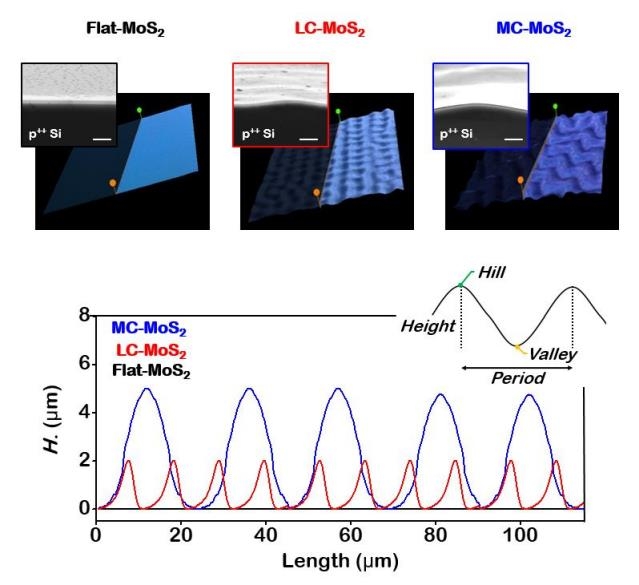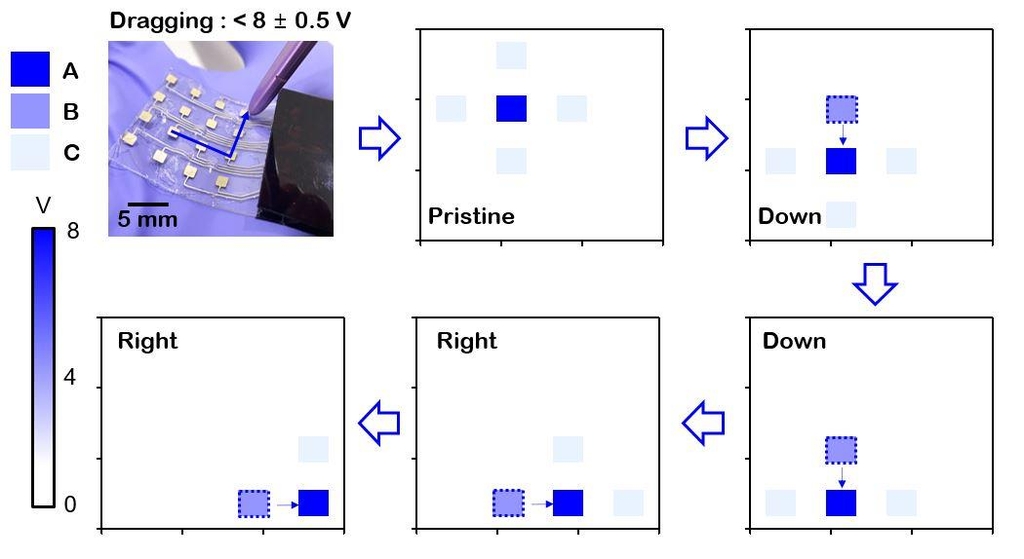


Dr. Lee Seung-gi and Professor Jeong Chang-kyu of the Department of New Materials Engineering at Jeonbuk University of Science and Technology (KIST) said they have developed a touch sensor that has increased the efficiency of the Triboelectric effect by more than 40%, forming a wrinkle structure in the 10-day flat shape of the lee sulfide moimbene (MoS³).
Ultra-fine and low-power sensors and devices that send and receive signals and information anytime, anywhere, but essential elements of the Internet of Things (IoT) era, but the problem is that it is difficult to continuously supply electricity to these electronic devices as wired or battery.
As a solution to this, the Triboelectric effect generator to induce the Triboelectric effect in contact with the material, such as static electricity to create energy has attracted attention. However, the typical Triboelectric effect generator is a problem that is difficult to apply to wearable electronic devices, such as the larger and heavier size to produce sufficient electricity.
In this study, the researchers adjusted the characteristics of the two-dimensional semiconductor material disulfide molybdenum (MoS2), which acts as an active layer in the Triboelectric effect generator, and changed the structure, increasing the Triboelectric effect generation efficiency by 40%.
When synthesizing the silicon / silicon oxide when synthesizing the silicon / silicon oxide as a substrate and applying a strong heat treatment process used in the semiconductor process, the silicon oxide is made of a pleated form of the disulfide molybten that is synthesized on it by crumpled in the heat.
The wrinkled form of disulfide molybdenum is developed by 2. Triboelectric effect generation efficiency was 50% higher than the disulfide molybdenum (1. 5°) of the flat state to 25 μW (microwatts), it was found that the stable Triboelectric effect output is maintained in 100,000 repeated experiments.
The research team has developed a lightweight and flexible powerless Touch sensor that can be powered without batteries by applying a wrinkled two-dimensional disulfide molybdenum to a Touch sensor used in a Touch pad or display.
The advanced Touch sensor is sensitive to stimuli and can recognize touch signals with less force without the need for external power supplies, the researchers explained.
Dr. Lee Seung-gi said, "This study suggests a way to increase the efficiency of the Triboelectric effect by compounding polymers, which will be the basis for the development of next-generation functional materials based on two-dimensional materials, and will be used as a self-powered power source to replace small batteries."
The findings were published in the latest issue of Nano Energy, an international journal of nanoscience.
KIST Dr. Lee Seung-gi "Increased triboelectric effect efficiency by 50% with two-dimensional nanomaterials in wrinkle structure"



0 Yorumlar